We often talk about the increasing diversity of our caseloads. It is a reality that we have caseloads with individuals from many different countries who speak many different languages. That’s why we worked with speech-language pathologists all over the country to create bilingual parent questionnaires for speech-language evaluations in 16 different languages.
Parent Input is Critical, Especially for Bilingual Speech-Language Evaluations
Caregiver input is always important when conducting a speech-language evaluation but it is even more critical when we are working with children from diverse backgrounds. Below I’ll share some research that supports why that is. I’ll also say that in my three decades of working in this field, there’s an important piece of anecdotal evidence I’ve noticed. And that is that when a child who speaks a language that their teacher does not speak is referred for a speech-language evaluation, and there is disagreement between parents and teachers about whether the child’s communication skills are delayed, the parent is often right. With a solid bilingual parent questionnaire, we can often get to the bottom of this quickly.
There is an increase in children from diverse backgrounds on our caseloads
Let’s talk a little bit about the increased diversity that you feel on your caseload. I’ll first say that it is not your imagination. Your caseload really is more diverse than it once was, and here’s why. Take a look at these graphs.
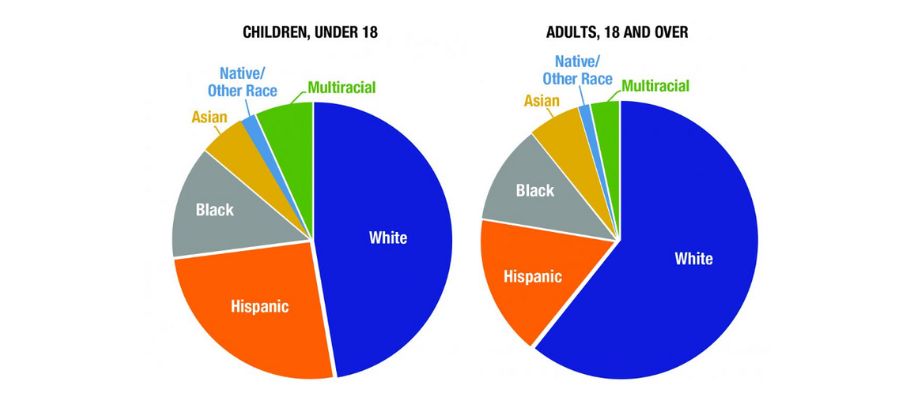
These graphs show that the demographics of the United States are changing rapidly from one generation to the next. On the right, you have adults, with the White population around 60%, and on the left you see the population of children at the same point in time, with the White population less than 50%. That is a significant demographic shift.
Teachers and Speech-Language Pathologist Demographics in the U.S.
Now, let’s looks at the difference between children and the teachers and speech-language pathologists who work with them.
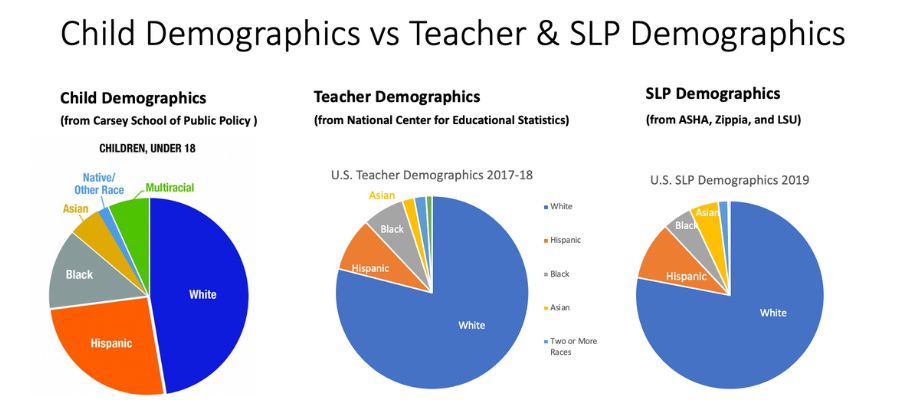
That’s a pretty drastic difference, isn’t it? Let’s think about what this means. You can see from the two graphs on the right that the demographic makeup of teachers and speech-language pathologists in the United States is far less diverse than that of children. And as a result we have teachers and speech-language pathologists who work with children whose language and culture differ from theirs. When we look at the research related to that we find the following.
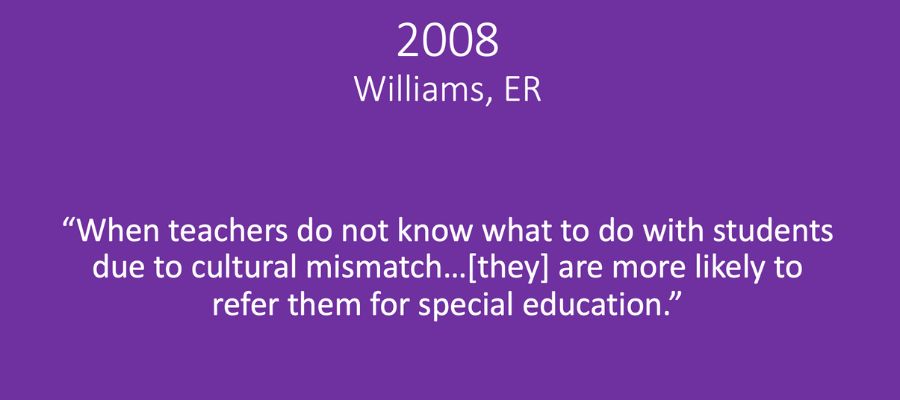
Cultural mismatch between teachers and students can lead to inappropriate special education referrals
Research shows that when teachers do not know what to do with students due to cultural mismatch they are more likely to refer them for special education evaluations (Williams, 2008). And then let’s stack another study on top of that.
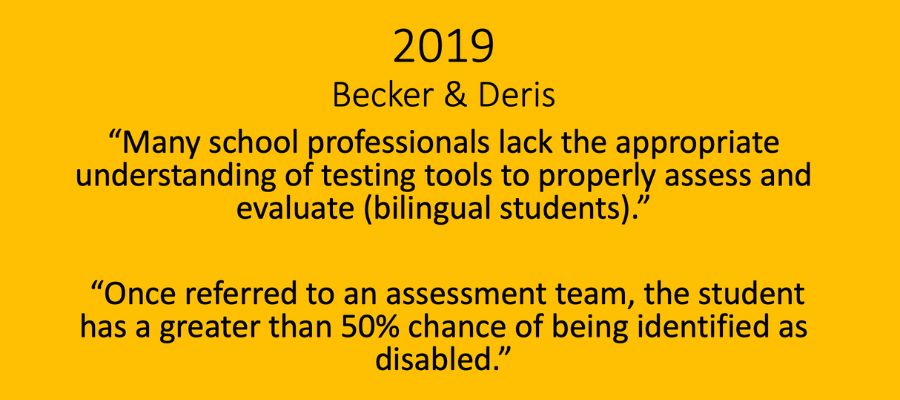
Bilingual Evaluations are Challenging for Many Evaluators
Becker and Deris (2019) found that many evaluators struggle with evaluating bilingual students and that once students are referred for an evaluation, they have a greater than 50% chance of being identified as disabled. So it’s a double whammy! And this is part of the reason that we have an over-representation of bilingual children in special education programs.
So, one thing that we can do a better job of is to get good information from parents about whether or not they are concerned about their children’s development. This will help us reduce the number of students who are referred for special education evaluations and services simply due to a cultural and linguistic mismatch between students and teachers and between students and speech-language pathologists.
Bilingual Parent Questionnaires for Speech-Language Evaluations in 16 Different Languages
Here are some great multilingual tools to help you serve your diverse caseload. We started with the culturally sensitive questionnaire that we created and then we worked with speech-language pathologists all over the country, including a concentrated group in the Los Angeles Unified School District, to create parent questionnaires in 16 different languages so that you can gather the information you need from your families.
We know that the information that parents provide in the assessment process is critical to getting our evaluations right. We also know that it’s hard to collect great information when there is a language barrier. The bilingual speech-language questionnaires we created allow you to read the questions in English and converse with your interpreter to understand the family’s response. You can also use Google Translate to get the gist of their responses so that you know what questions to follow up with when you have your interpreter with you.
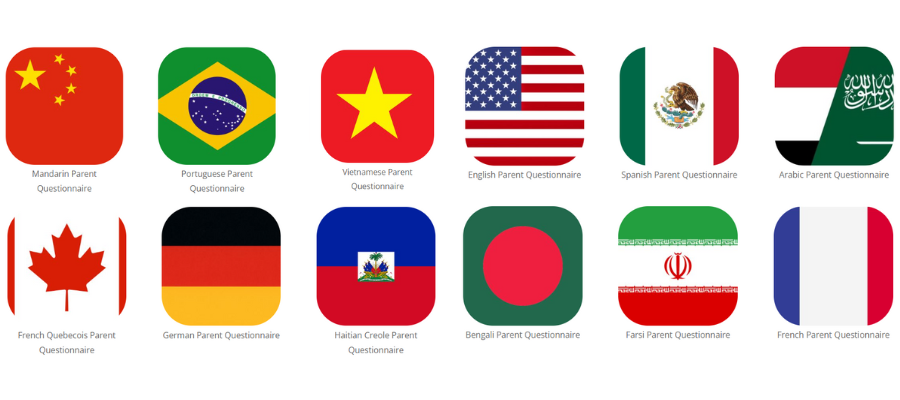
Bilingual Speech-Language Parent Questionnaires
The questionnaires live in our online library of free speech and language resources. Bookmark the library or bookmark this post so you’ll have them at your fingertips when you need them.
Each item on the questionnaires includes the target language AND English, which facilitates the process for you as you work with an interpreter to understand the family’s responses.
And if you speak a language that isn’t represented in the questionnaire library, let us know if you can help. When we share the contributions we make to the field, life is better for all of us.

